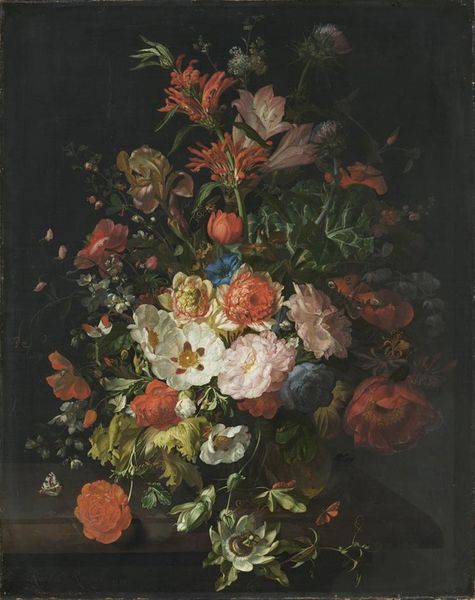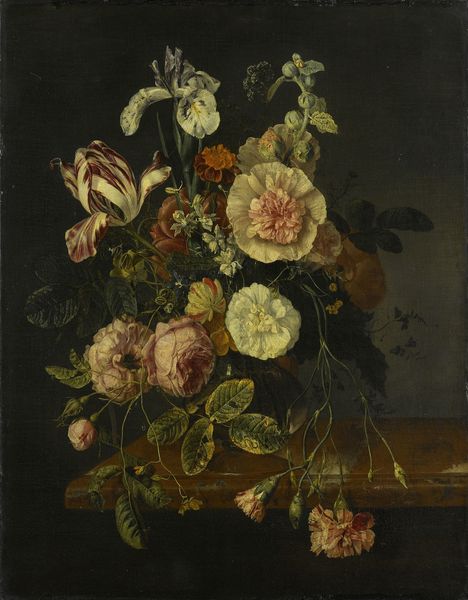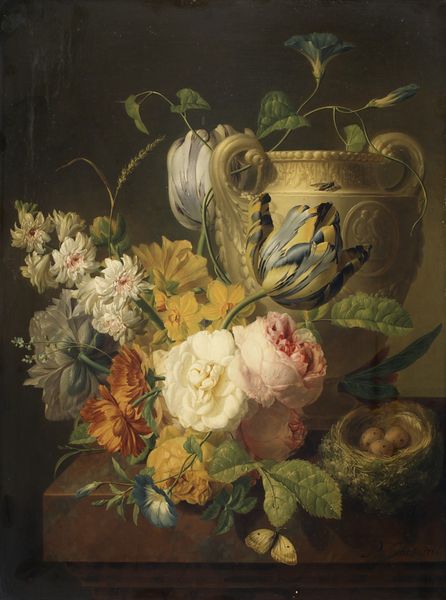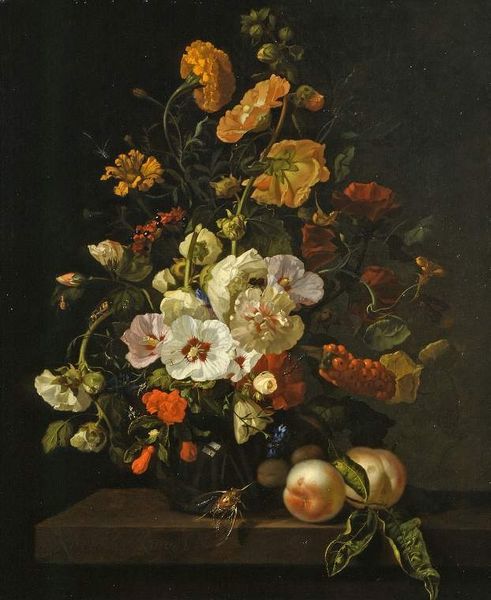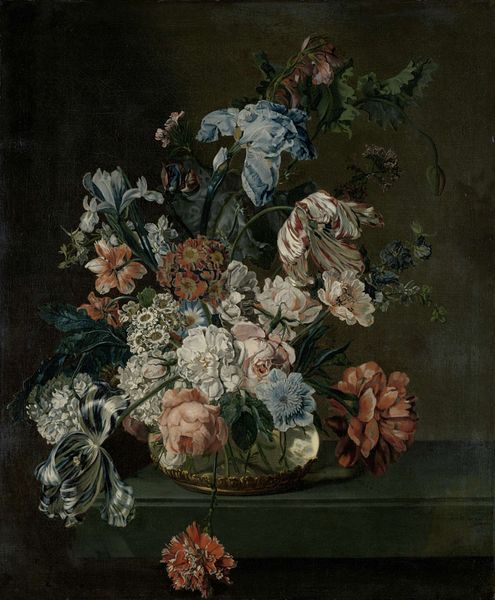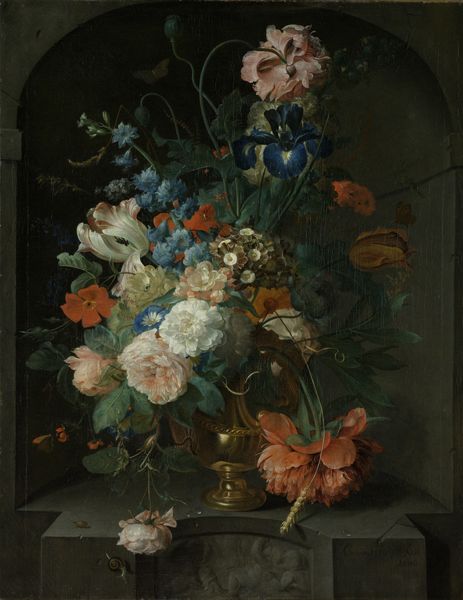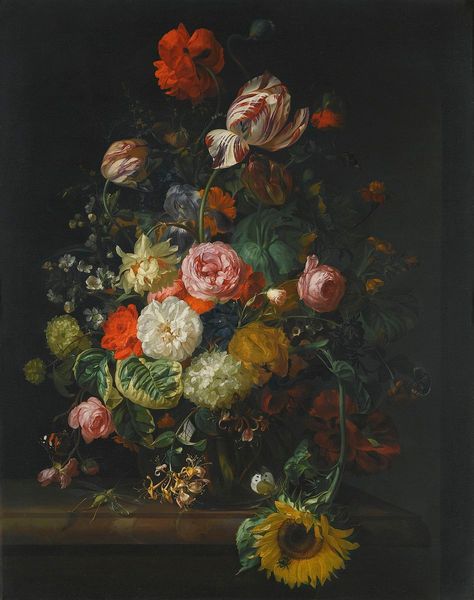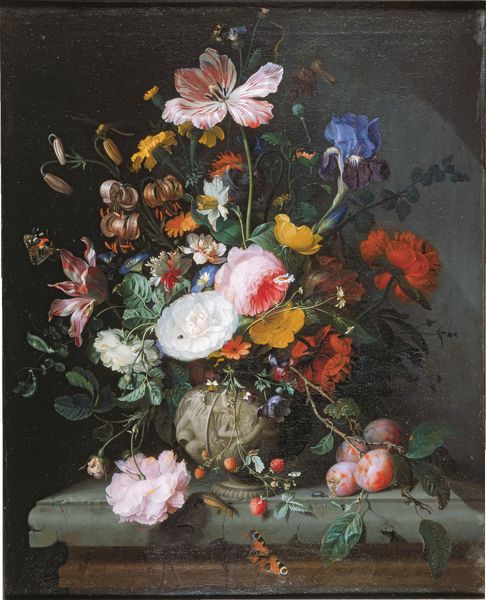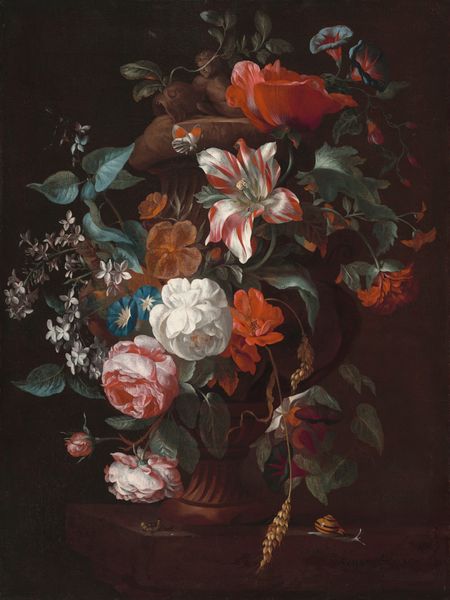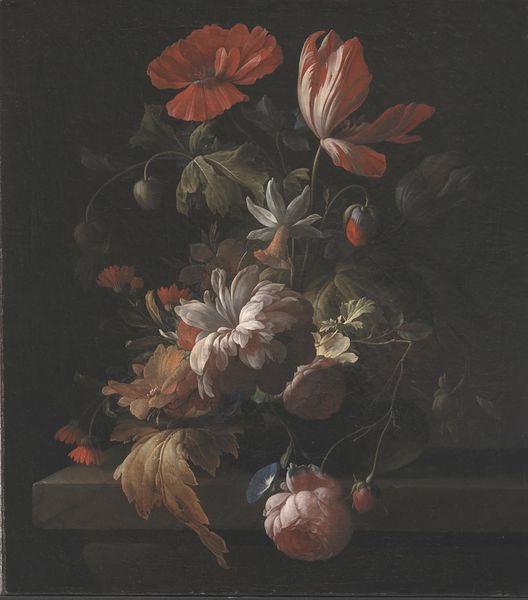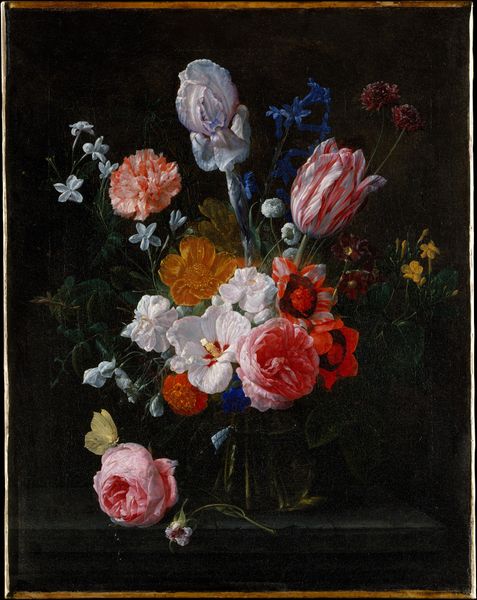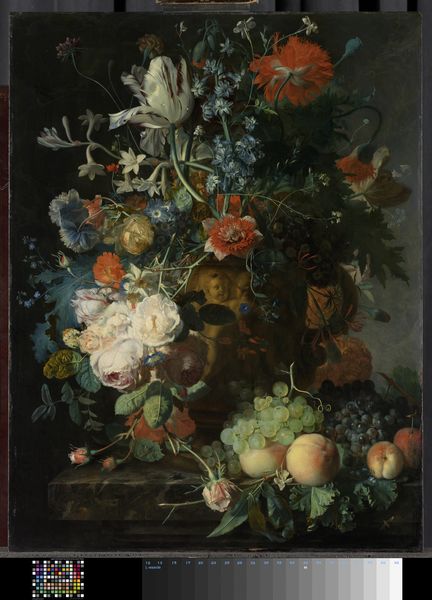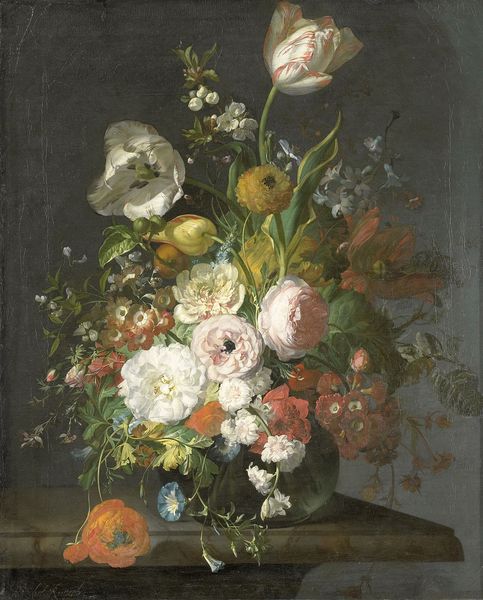
tempera, painting, oil-paint
#
baroque
#
tempera
#
dutch-golden-age
#
painting
#
oil-paint
#
flower
#
oil painting
#
realism
Copyright: Public Domain
Curator: Upon our right, we encounter Rachel Ruysch’s "Still Life with Bouquet of Flowers," created in 1698. Ruysch was a celebrated figure of the Dutch Golden Age, renowned for her meticulously detailed and often symbolically laden floral paintings. Editor: It’s so dense. My initial reaction is one of… slight melancholy, actually. Despite the vibrant colors, the darkness surrounding the arrangement feels weighty, like a shroud. And there is a creeping subtle rot within this bloom. Curator: I agree, it is indeed very heavy! That chiaroscuro effect—the dramatic contrast between light and dark—is characteristic of Baroque painting. Note how the light isolates these individual blooms. But I wouldn’t necessarily agree about rot. A still life doesn't merely capture beauty, but its passing, a Vanitas perhaps; with certain symbols to notice, wheat symbolizing resurrection, or butterflies and dragonflies, commonly symbolic of transformation. Editor: Good point about the butterflies—that is uplifting. But still, examine the composition itself. See the wilting petals, the insect nearby. And beyond any symbolic intent, consider the overall color palette: earthy browns, bruised reds. There's a sense of decay creeping around these beauties. The materiality of the oil paint, so richly applied, almost emphasizes the fleshy, organic nature of the subject, which in turn highlights its vulnerability. It all feels a bit morose. Curator: The darkness may symbolize death. In her works, she captures an essence, like these insects suspended. This relates to the theme of life, death and metamorphosis often explored in art from this period. Perhaps Ruysch reminds us how brief our existence may be, though there may still be hope and life through light after darkness, death, and transformation? Editor: True. It is difficult to dispute such iconic connotations of the period, and her use of symbolism is fascinating. All these things draw your eye around the whole surface and encourage you to consider, at every level, life itself. It's still unnerving somehow. The illusion created is really incredible, although these kinds of allegories were not unknown in her practice at the time. Curator: Perhaps what initially feels unsettling becomes something profound. The image becomes timeless and reflective. It lingers, suggesting deeper truths. Editor: Indeed. An unsettling reminder of life's brevity rendered with exquisite skill.
Comments
stadelmuseum about 2 years ago
⋮
The daughter of a professor of anatomy and botany was one of the most sought-after still-life artists of her time. In view of her talent, Rachel Ruysch was apprenticed to Willem van Aelst, which was highly unusual for a woman at the time. On this painting, she has arranged a bouquet of flowers casually in a glass vase. Several small creatures, including a butterfly, a caterpillar and a dragonfly, enliven the flower arrangement. The zoological interest appears to complement the botanical one. The idea of transience, and the fact that the magnificent flowers portrayed here will wither and decay, recedes into the background.
Join the conversation
Join millions of artists and users on Artera today and experience the ultimate creative platform.
